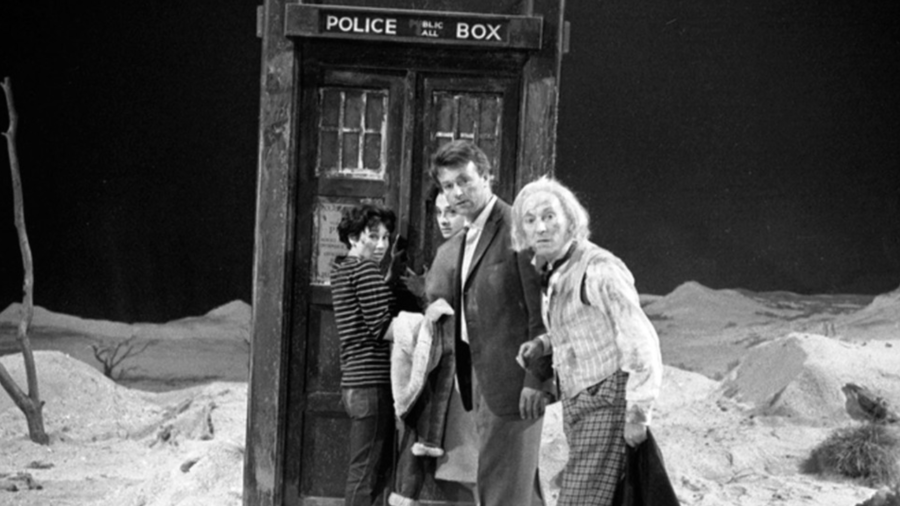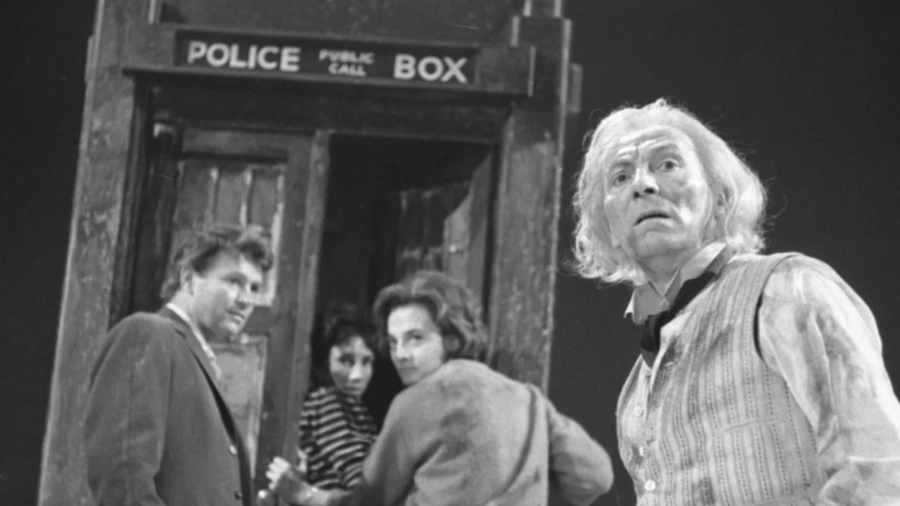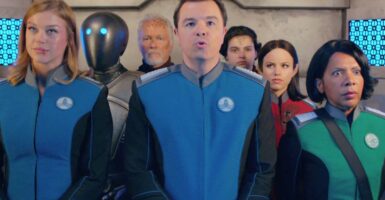Doctor Who Rewatch: An Unearthly Child
The Doctor tolerates this century, but he doesn't enjoy it.

Doctor Who’s The Unearthly Child originally aired November 23, 1963
Doctor Who celebrated 50 years of existence in 2013, with November 23rd marking the day the very first episode aired, way back in 1963 (and the airdate of the 50th anniversary special).
I’ve been a casual fan of Doctor Who for decades, from back when I’d catch episodes late at night on my PBS station (almost always Tom Baker episodes for some reason). But it wasn’t until Russell T Davies launched the show’s modern incarnation, with Christopher Eccleston in the role of the Ninth Doctor, that it became appointment television.
And with that Doctor Who anniversary looming, I decided it’s time to do something I’ve been meaning to do for ages now: go back and experience the classic Doctors’ adventures in order. And so I welcome you to “A Who a Day,” a regular feature where we follow our favorite Time Lord down through the years, from William Hartnell to Matt Smith and beyond. If you’ve never watched the show, or if you’re just in the mood to rewatch it, I hope you’ll join in and share your thoughts in the comments below.
So let’s get to it, back where it all began: with a curious police box sitting in the midst of a junkyard…
The Gist Doctor Who‘s An Unearthly Child
After giving us our first Doctor Who glimpse of the TARDIS as a London copper patrols past, we shift into a school where history teacher Barbara Wright (Jacqueline Hill) and science teacher Ian Chesterton (William Russell) are winding down their day and swapping war stories about one particular, peculiar student: young Susan Foreman (Carole Ann Ford).
She’s something of a mystery: her knowledge of their respective subjects is far ahead of her years, but she seems to have blind spots in less academic areas, such as remembering how modern currency works. After Susan swings by to borrow a book on the French Revolution, the teachers offer her a ride home but she declines, insisting that her grandfather doesn’t like visitors.
Barbara and Ian let their curiosity get the better of them, and let’s be thankful they did because otherwise this would have been a very short series. Traveling to the address listed as Susan’s home, they find themselves at a very familiar junkyard, in which resides a very familiar police box.
Having seen Susan enter, they’re befuddled when they can find no trace of her inside. They do, of course, notice the police box, noting that it seems to be emitting a strange hum. They hide when they hear someone approaching, and we get our first glimpse at the Doctor, as played with cranky eccentricity by William Hartnell.
After hearing Susan call to him, seemingly from inside the police box, Barbara and Ian confront the old man and demand to know what’s going on. The Doctor at first insists they must have been hearing things, but then Susan opens her yap again and the teachers barge past the old man…and into the spacious interior of the TARDIS. Which — as will be pointed out countless times in the adventures to come — is much, much bigger on the inside than on the out.

Now that Barbara and Ian have seen the Doctor and Susan’s secret (even if they don’t understand it), the Time Lord insists they can’t let them go, and neither can they remain in 1963. The teachers scoff at the notion that they’re inside a vessel that can travel through time and space, much less that both the old man and Susan are alien beings, but the Doctor settles the argument by sending the TARDIS off into the timestream. It rematerializes on a barren plain…and a shadowy figure approaches…
The Good From Doctor Who’s The Unearthly Child
It’s interesting to look back from some five decades later and try to imagine what it must have been like going into Doctor Who without any expectations. Why the hell were they showing us a police box in the middle of a junkyard? If ever there were a first impression that fell woefully short of suggesting the wonders that were to come, the opening moments of “An Unearthly Child” are pretty high on that list.
The pacing of the Doctor Who episode feels positively leisurely by modern standards, but even taking that into account it keeps you interested by posing one mystery after another. It’s worth noting that fully two-thirds of the episode have passed before we’re introduced to the Doctor himself, but Hartnell comes out swinging.
First he seems to take great joy in refusing to answer any of Barbara and Ian’s questions, then provides them more answers than they can deal with and shanghaiing them off to the Stone Age.
Having been immersed in the modern vision of Doctor Who for years now, it’s interesting how different this first impression of the character is.
He’s certainly got the eccentricity that is a hallmark of the character, but he shows little of the passionate love of humanity that later incarnations overflow with. The Doctor scoffs that “I tolerate this century, but I don’t enjoy it,” and indeed he seems so eager to leave that you have to wonder why he’d parked in ‘60s London long enough to let Susan grow fond of it in the first place.
I really like the jarring difference between the Doctor I’ve come to know and this first introduction, because it suggests a natural evolution for the character. It’ll be interesting to see how that aspect of his personality changes over the many episodes to come.
The Bad From Doctor Who‘s The Unearthly Child
Aside from the slow pacing, which is just part and parcel of its era, there’s nothing too glaring that stands out as a negative when viewed from our lofty 21st century viewpoint. Well, okay, maybe one thing.
I’ll fully concede that The X-Files has proven the narrative potential of pairing a skeptic with a true believer, but Barbara is way, way too nonchalant about this whole “bigger on the inside” thing. I admire her devotion to getting to the bottom of things, but when confronted with something like that, I think you need to at least take a moment’s pause to acknowledge that your conception of reality just sustained a serious blow. I’m just sayin’.
Questions from Doctor Who‘s The Unearthly Child
Since the first two Doctors are the ones I’ve seen the least material from, I’m making a point not to read ahead or look up answers to any questions that might be answered in the stories that are to come. So at this point I have no clue how the whole “Grandfather” relationship works. Is the Doctor literally, biologically Susan’s grandfather? Do we ever get to meet the rest of her family?
Given how “young” she seems, can we assume she hasn’t been through her first regeneration yet? For that matter, am I correct in assuming the Doctor was born, lived, and aged however many years it takes a Time Lord to look as old as he does? Obviously, physical appearance isn’t an accurate gauge of age once the regenerations have begun, but do they otherwise age like we do until that first mortal wounding?
Also, Susan says she coined the name TARDIS, short for Time And Relative Dimension In Space. So what’s the official name for the Time Lords’ four-dimensional vessels? Whatever it is, I bet it’s not as catchy as “TARDIS.”
Quotes from Doctor Who‘s The Unearthly Child
The Doctor: You don’t understand, so you find excuses. Illusions, indeed? You say you can’t fit an enormous building into one of your smaller sitting rooms?
Ian Chesterton: No.
The Doctor: But you’ve discovered television, haven’t you?
Ian Chesterton: Yes.
The Doctor: Then by showing an enormous building on your television screen, you can do what seemed impossible, couldn’t you?
Ian Chesterton: Well, yes, but I still don’t know…
The Doctor: Not quite clear, is it? I can see by your face that you’re not certain. You don’t understand. And I knew you wouldn’t! Never mind.












